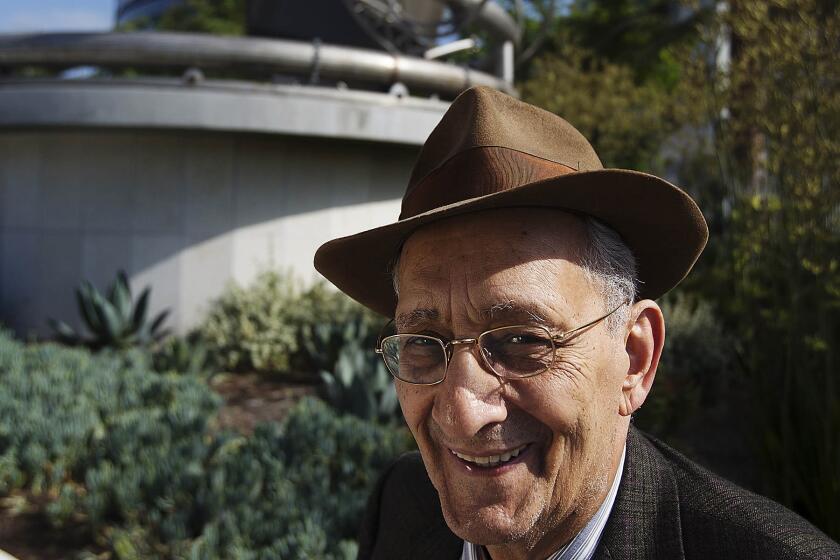Frank Stella, minimalist painter and sculptor, dies at 87
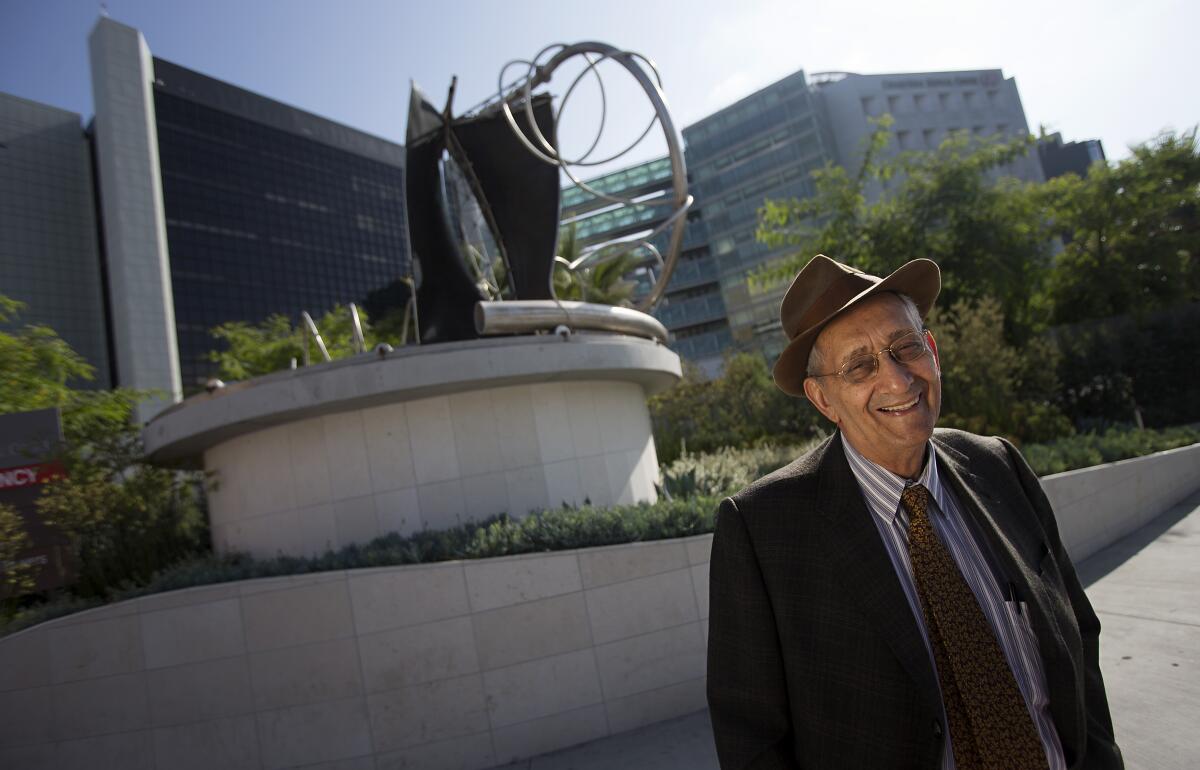
NEW YORK — Frank Stella, a painter, sculptor and printmaker whose constantly evolving works are hailed as landmarks of the minimalist and post-painterly abstraction art movements, died Saturday at his home in Manhattan. He was 87.
Gallery owner Jeffrey Deitch, who spoke with Stella’s family, confirmed his death to the Associated Press. Stella’s wife, Harriet McGurk, told the New York Times that he died of lymphoma.
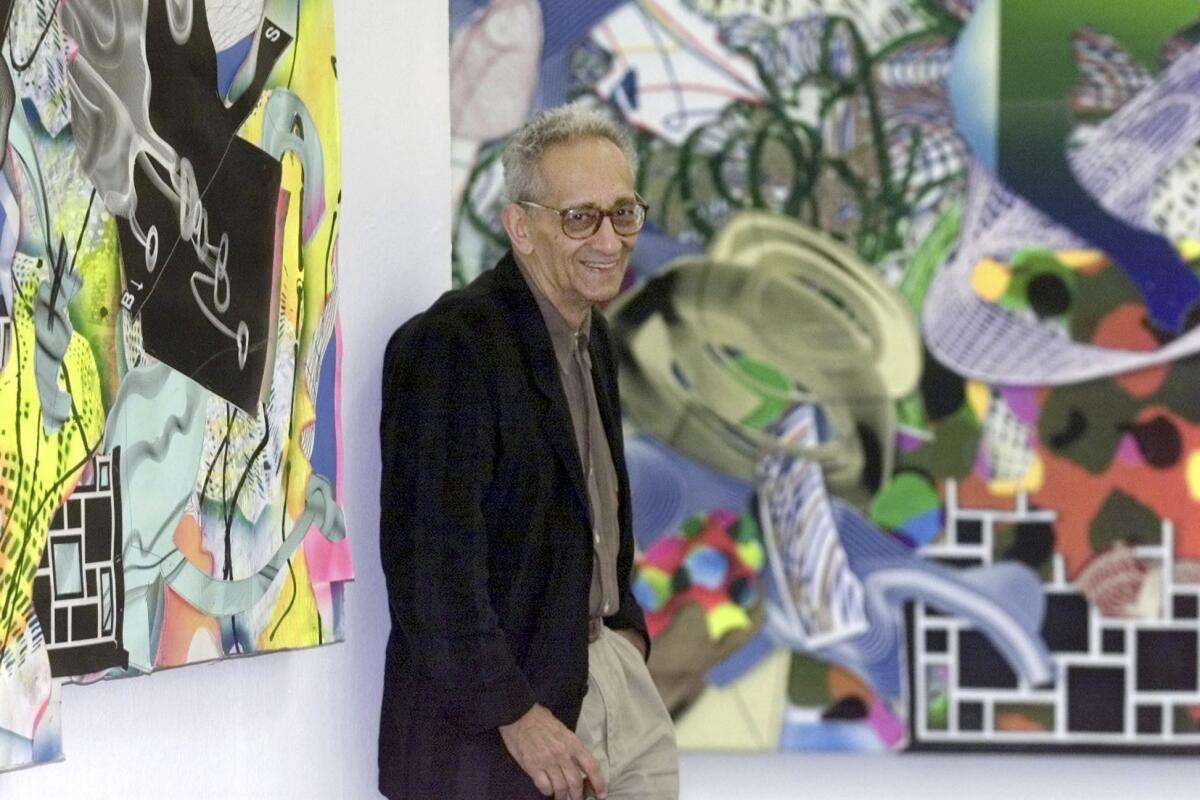
Born May 12, 1936, in Malden, Mass., Stella studied at Princeton University before moving to New York City in the late 1950s.
Los Angeles holds a special place for Frank Stella.
At that time many prominent American artists had embraced abstract expressionism, but Stella began exploring minimalism. By age 23 he had created a series of flat, black paintings with gridlike bands and stripes using house paint and exposed canvas that drew widespread critical acclaim. His 1964 statement, “What you see is what you see,” became a minimalist dictum.
“[Stella] had effectively started a new art movement that would come to be known as minimalism,” wrote Times art critic William Wilson in 1989. “It rejected the growing idea that art should return to depicting real things that would become Pop. It rejected the old idea that abstract art must be made in bursts of passion, fueled by existential angst and Old Crow. It posited the idea that art could be made by figuring it out. In one way it was a new classicism, in another it was a new form of corporate academicism.”
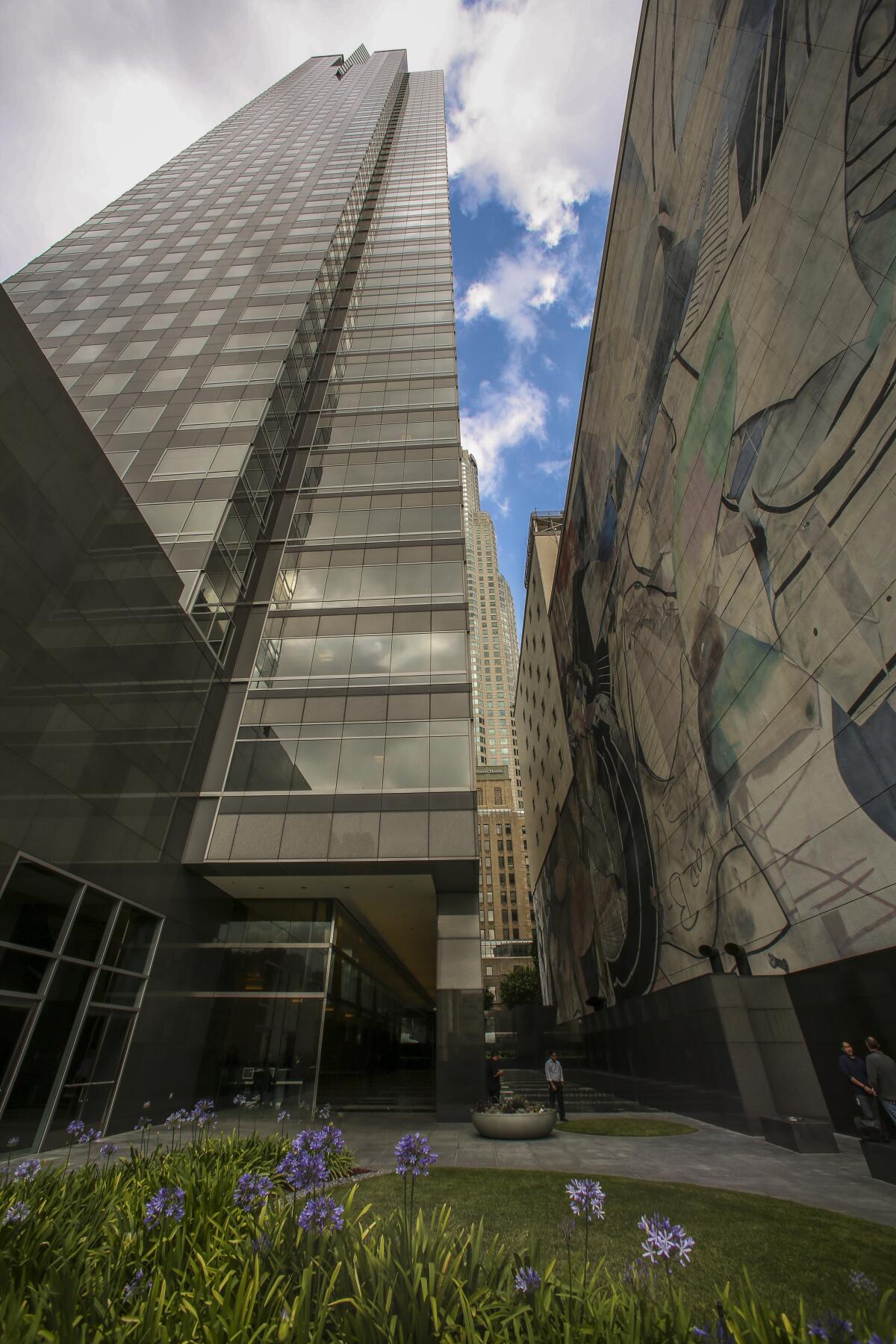
Stella went on to create compositions of V shapes, interlaced circles and protractor curves. “Canvases throbbed with the cool glamour of florescent and metal-flake hues and bore exotic lapidary titled like ‘Star of India,’” wrote Wilson. “Frank Stella became the painter to be reckoned with. In the ‘60s no artist could pick up brush or spray-gun without dealing with Stella in their minds. He was just so damn smart.”
In the late 1970s, Stella re-created himself in an aesthetic demolition when he began adding three-dimensionality to his visual art, using metals and other mixed media to blur the boundary between painting and sculpture.
Frank Stella certainly doesn’t look like the leading international Classical Baroque master of abstract art.
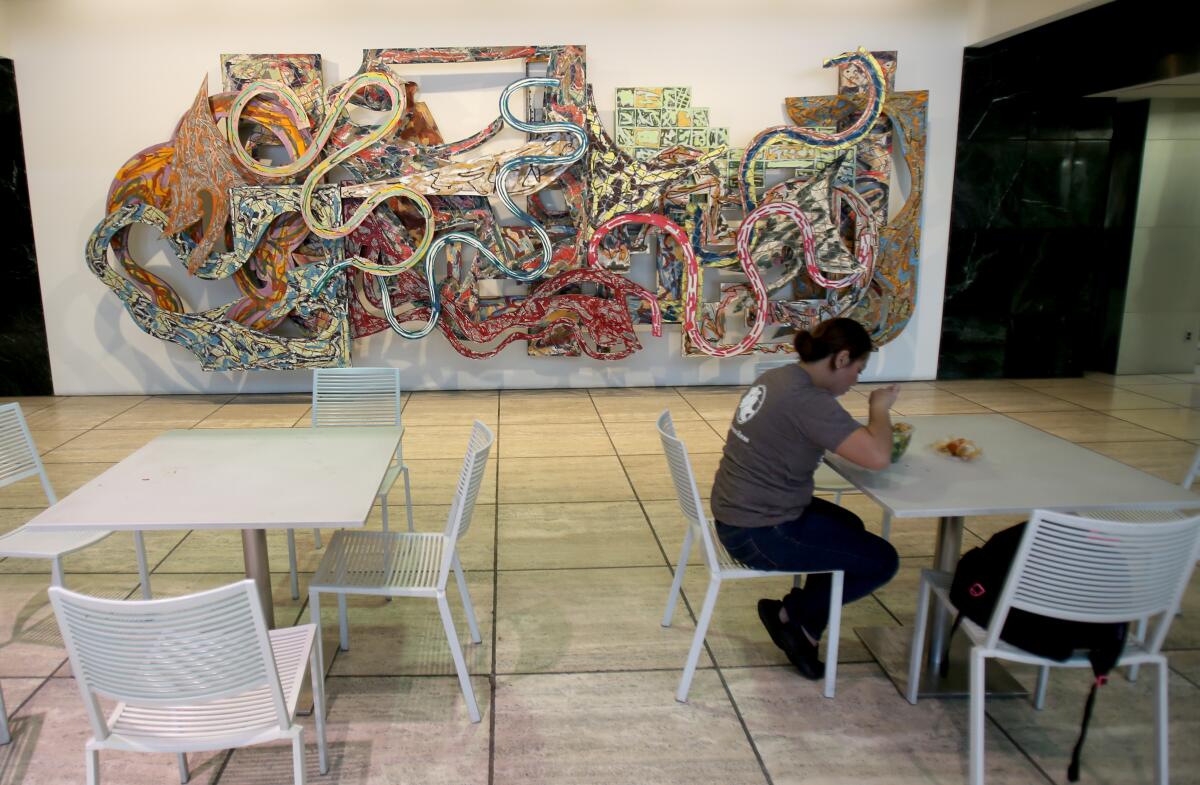
Stella continued to be productive well into his 80s, and his new work is currently on display at the Jeffrey Deitch Gallery in New York City. The colorful sculptures are massive and yet almost seem to float, made up of shining polychromatic bands that twist and coil through space.
“The current work is astonishing,” Deitch told AP on Saturday. “He felt that the work that he showed was the culmination of a decades-long effort to create a new pictorial space and to fuse painting and sculpture.”
In 2014, Stella visited Los Angeles while his sculpture “Adjoeman” was on loan to Cedars-Sinai Medical Center and displayed on a pedestal at the intersection of Beverly and San Vicente boulevards in West Hollywood. The artist was the son of a doctor, married a doctor, and two of his children are physicians. He told The Times, “People say [art] has an effect. Whatever healing effects art may have, it’s the attention that goes with the art that’s paid to the patient that really helps with the result.”
Stella is survived by his wife, Dr. Harriet E. McGurk, four children and five grandchildren.
Times staff contributed to this report.
More to Read
The biggest entertainment stories
Get our big stories about Hollywood, film, television, music, arts, culture and more right in your inbox as soon as they publish.
You may occasionally receive promotional content from the Los Angeles Times.
